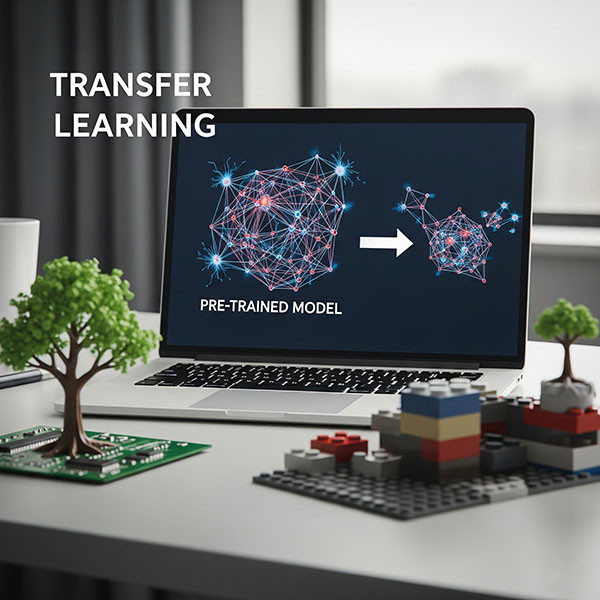In today's time, Artificial Intelligence (AI) and Machine Learning (ML) have changed many aspects of our lives. Self-driving cars, voice assistants, face recognition, chatbots — these are all examples of machine learning. But one concept behind all these technologies that is becoming increasingly popular is Transfer Learning.

In this answer, we will understand in simple language what transfer learning is, how it works, and when you should use it.
What is Transfer Learning?
In simple language, suppose an AI model has already been trained to recognize millions of images. Now, if you have to create a model to recognize pictures of dogs for a new project, then you do not need to train from scratch. You can take a pre-trained model and simply fine-tune it on your new data.
This saves you time, money, and computing power.
How does transfer learning work?
Transfer learning mainly consists of two steps:
1. Taking a pre-trained model
A model trained on a large data set (such as ImageNet, COCO, Wikipedia Text Data, etc.) is taken. This model has already learned many patterns and features.
2. Fine-tuning
Now this model is adjusted for your new task. For example:
Removing the last layer and adding a new layer
Freezing some layers and retraining the rest
Changing hyperparameters
Advantages of transfer learning
1. Saving time
There is no need to train from scratch, which reduces development time.
2. Less data required
If you don't have a very large data set, you can still build a good model.
3. Lower cost
Fewer computing resources are required, which saves money.
4. Better performance
The pre-trained model has already learned complex patterns, making the new model more accurate.
When should transfer learning be used?
Transfer learning is not necessary in every situation, but it is the best option in some cases:
1. When you have limited data
If you have only a few hundred image or text samples instead of thousands, transfer learning is helpful.
2. When the task is similar to the previously learned task
If the task on which the pre-trained model has been trained is related to your task, transfer learning gives very good results.
3. When you need fast results
This technique is useful in research projects or product development where the timeline is short.
4. When you have limited computing power
If you don't have high-end GPUs or large servers, transfer learning is best suited.
Examples of Transfer Learning
1. Image Recognition
Using models trained on ImageNet for medical X-ray or satellite image analysis.
2. Natural Language Processing (NLP)
Fine-tuning pre-trained language models like BERT, GPT, RoBERTa for chatbots, text classification, or sentiment analysis.
3. Speech Recognition
Adjusting pre-trained audio models for a specific language or accent.
Popular models and libraries of transfer learning
TensorFlow Hub – Library of pre-trained models
PyTorch Hub – Image and NLP models
Hugging Face Transformers – NLP and generative AI models
Keras Applications – MobileNet, ResNet, VGG etc. pre-trained models
Future of transfer learning
Custom chatbots and content generators are being created through fine-tuning in generative AI.
This technique is being adopted in medical AI for accurate diagnosis even on small data sets.
Industry specific AI (such as legal, education, finance) is being worked on by customizing already trained models.
Conclusion
Transfer learning is a smart technique that makes the process of building machine learning models faster, cheaper and easier.
If you have less data, less time or limited computing power, then this is the best option.